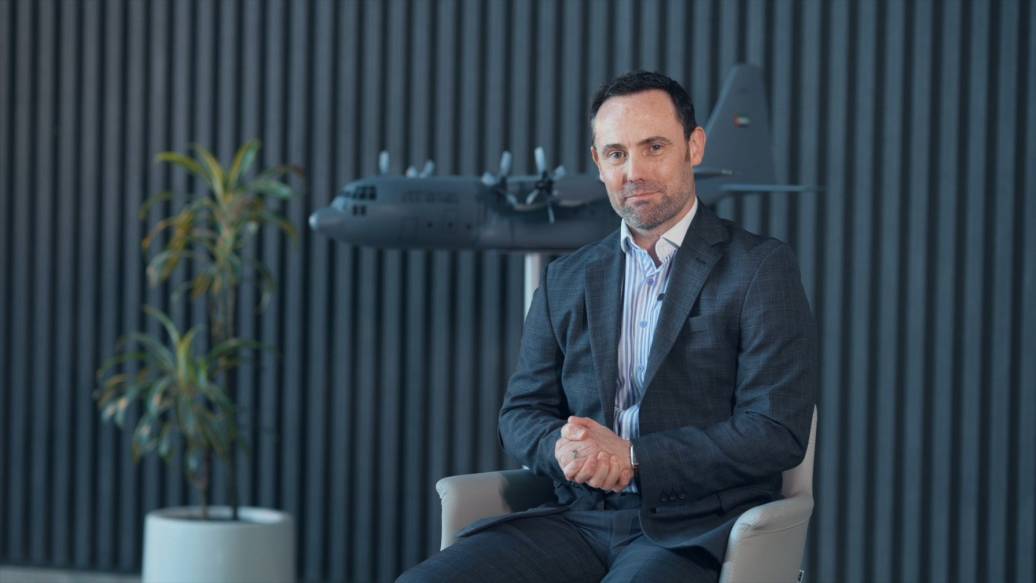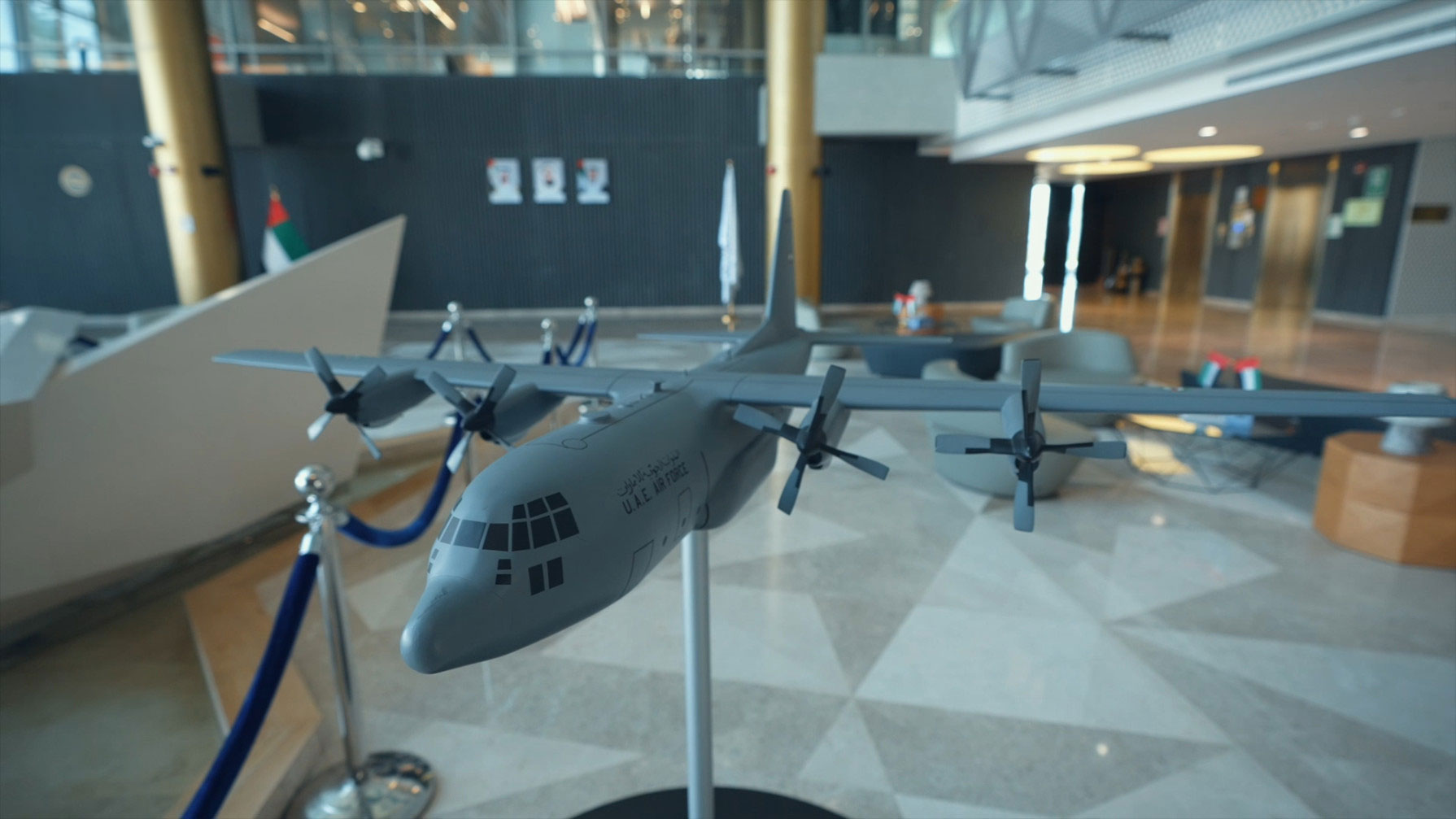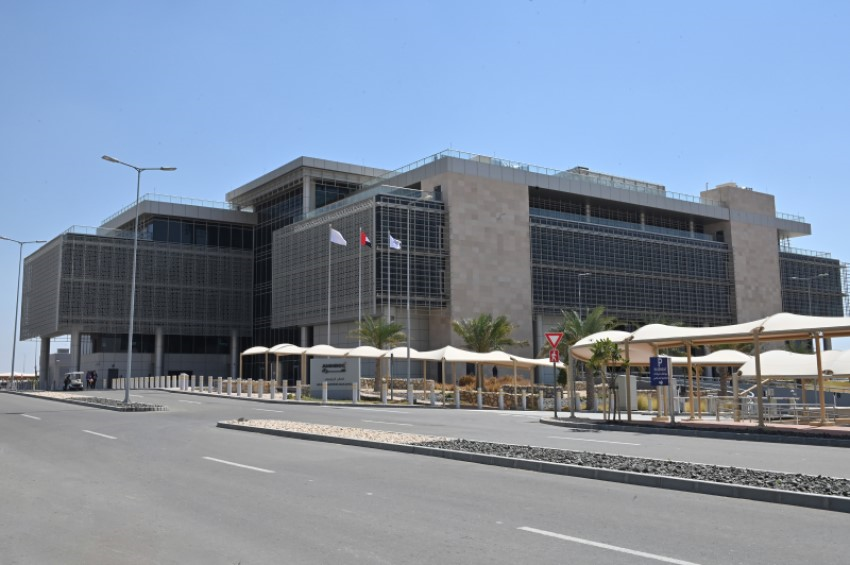

Mark Hewer is Director of Marshall’s Aero Engineering Services business line.
Before joining Marshall in 2024, Mark led the UK business of Telespazio, a joint venture between Leonardo and Thales operating in the satellite solutions and services sector. Prior to this, he held business leadership roles in Mission Support in Leonardo.
Mark has also led programme teams supporting flagship fixed-wing and rotary-wing platforms, including the Eurofighter Typhoon and Apache.
Mark is also a Fellow of the Royal Aeronautical Society.
Earlier this month, I joined my Marshall Aero Engineering colleagues for a visit to the UAE as we kicked off our strategic partnership with the Advanced Military Maintenance Repair & Overhaul Center (AMMROC).
AMMROC’s facility is located in Al Ain, a city about 100 miles inland from Abu Dhabi. The facility is new, well-equipped, and able to accommodate many aircraft types ranging from the C-130 Hercules to fast jets and rotary-wing aircraft.
I had visited AMMROC before, but this this time I was particularly struck by the realisation that I was witnessing—and perhaps starting to play a small part in—something very rare: the emergence of a new and transformative national capability.
I was left with a strong belief that within a few years, the UAE will go beyond achieving self-sufficiency in aircraft MRO and engineering, taking its place as a regional and global leader and an authority in its own right.
In this article, I will very briefly outline three factors that I believe will catalyse this transformation for the UAE: capital, ambition and credibility. I will also touch on what all of this means for fleet operators and the aviation world more broadly.
Capital
As one of the Middle East’s most open economies, the UAE continues to flourish as a centre of trade and investment amidst the broader region’s extraordinary growth over the last few decades.
This availability of financial capital is married to a willingness to make strategic investments that can help diversify the nation’s strengths and secure long-term prosperity, whether exclusively within the private sector or through sovereign wealth funds.
There is also an abundance of human capital—something that was readily apparent at all times through our encounters with AMMROC’s diverse and highly international team. It was particularity energising to have meetings and discussions with the engineering team made up of talented people from across Europe, Asia, the Middle East and, most importantly, local Emirati engineers.
Ambition
This second factor, ambition, is perhaps a little more abstract and harder to quantify, but I felt it no less strongly during my time at AMMROC.
While everyone I spoke to at AMMROC was justifiably proud of their state-of-the-art facility, they were also thinking several steps ahead. The current setup is seen as a launchpad for major future programmes, capabilities, intellectual property and technologies. These are approached with a shared spirit of optimism and appetite to achieve great things together—part of a “Why stop there?” mindset you can find throughout the UAE.
Of course it is understood that some of these projects will need to be measured in timeframes of years, rather than months, but they are still being tackled with a collective eagerness: everyone is motivated to put in place the necessary ingredients to support the UAE’s military aircraft fleets, but also to reach outside their own borders and win further work in and beyond the Middle East.
Credibility
The final key factor that will underpin the UAE’s aviation transformation, and the one where Marshall stands to play a major role, is credibility.
In MRO and engineering, “credibility" means being able to fundamentally reassure customers that your organisation has the regulatory and engineering knowhow to deliver even the most challenging, complex and unusual projects.
This is why receiving UAE Military Design Organisation Approval (MDOA) is key to AMMROC achieving its ambition: being trusted to modify and approve changes on civil or military aircraft will bridge the gap between performing standard MRO work and becoming a “one-stop shop” for more comprehensive, longer-term engineering and sustainment programmes.
AMMROC is already off to a great start in this regard: the organisation has no shortage of highly experienced and credible aviation engineers, technicians and leaders. Despite this, Marshall can add significant value by sharing our decades of knowledge of existing regulatory requirements and processes, such as EASA or CAA Part 21J Design Organisation Approval.
Maintaining and staying up to date with Part 21J is a substantial undertaking: it requires a continual focus on safety, airworthiness and suitably qualified and experienced personnel (SQEP). Furthermore, this needs to be achieved through a combination or highly capable people, tools and processes, and a lot of organisational experience.
All of this adds up to a highly complex and rapidly changing challenge, posing substantial barriers to entry for any relatively young organisation, no matter how talented its team. In this sense, Marshall is serving as a catalyst for AMMROC’s growth, bringing our expertise to bear as we lower these barriers for our very capable partners.
Who will benefit?
Gaining MDOA status is important for AMMROC, for the UAE, and for the global aviation community.
As described above, the benefits for AMMROC are obvious: they will be able to design and self-certify their own modifications and repairs across multiple platforms.
This will make repair and modification work much more efficient by reducing reliance on OEM approval, while also enabling AMMROC to bid for bigger programmes and grow into new markets.
In turn, the UAE will come to possess a world-class sovereign capability in aircraft MRO and engineering. This means resilience and self-sufficiency when looking after in-country military fleets. Equally importantly, the UAE will be positioned as a regional aviation hub, supporting neighbouring countries in the region and potentially even further afield.
Aircraft operators will also feel the benefits: AMMROC’s emergence will unlock much-needed MRO capacity, while expanding the range of global options for sustainment and capability enhancement. Operators will also benefit from AMMROC’s “one-stop shop” capability through reduced turnaround times and improved availability.
In short, MDOA will enable growth for AMMROC and the UAE, while delivering operational efficiencies and improving the range of options for MRO customers.
This is just our first joint project in our long-term strategic partnership. AMMROC doesn’t stand still, and neither will we. Watch this space!
About AMMROC
Founded in 2010 and headquartered in Abu Dhabi, UAE, AMMROC is a premier provider of Maintenance, Repair, and Overhaul (MRO) services for military and commercial aviation. As the region’s only authorized Lockheed Martin C-130 Service Center and a Sikorsky-authorized UH-60 Black Hawk Blades MRO, AMMROC delivers unmatched capabilities, including comprehensive Black Hawk airframe and component services.
With one of the largest MRO hangar capacities in the region, including a state-of-the-art widebody paint hangar, AMMROC sets the standard for innovative, world-class aviation maintenance solutions.


